Off and on for a while now, we’ve been reviewing various ad networks with as little bias as possible. We’ve covered networks like Yahoo’s Gemini, AdBlade, and TrafficVance, and now it’s time for another review. This time, let’s talk about Propeller Ads.
What is Propeller Ads?
Propeller Ads is an advertising network that has been around since 2011. They’re based in the UK, and have a sizable presence in most English-speaking nations. They are an “alternative traffic source” initially operating entirely within pop ads. Pop ads, in case you’re not sure, are generally pop-under windows. You know those times where you close your browser and see a website in a new window you don’t remember opening? That’s a pop-under.
In the last few years, they have expanded from just pop-unders, to include a couple of additional forms of advertising. Their on-click ads are the traditional pop-under; a user clicks in a side and that click opens the pop-under as well as whatever they had intended it to do.
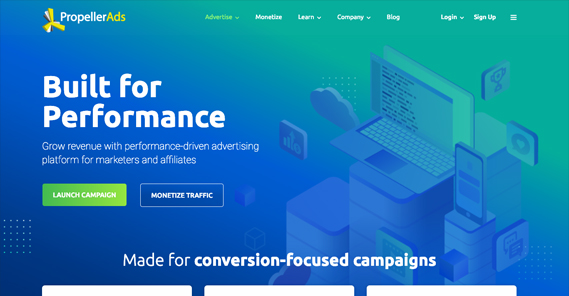
Additionally, they have native ads, which are ads designed to look similar to on-site related post widgets. Any time you’ve seen a bank of “related posts” that lead to other sites, chances are that’s a native ad display. They have native interstitials as well; this combines the timed pop-over lightbox technology (which we implement on our site) with native advertising. Instead of the pop-over pitching a service or newsletter, it shows a few “related” posts as advertising.
Finally, one of their newest technologies is push notifications. Whenever that bar at the top of your phone shows a notification, be it a message, text, or game notifications, that’s a push notification. It’s “pushed” to your phone, you see. Since an increasingly large number of people are using their mobile devices to browse the web, push notifications are increasingly useful and relevant.
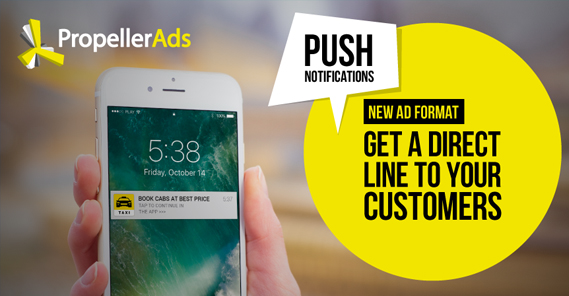
All of this is presumably backed by a lot of potential targeting to reach specific users most likely to be interested in your brand. Propeller has a self-service platform and automates a decent amount of ad optimization, and they have their own fraud prevention engine to cut out fake or bot traffic and ensure that you as an advertiser receive the best quality traffic their network can provide.
Propeller works for traditional businesses advertising themselves, and they have agency-level lead generation options for agencies trying to advertise their clients. They handle links to other ad networks with RTB/XML, and they allow affiliate marketers to use their platform as advertisers as well.
A lot of mobile and affiliate advertising companies partner with Propeller. They work with HootMobi, YeahMobi, STM, AffLift, AdCombo, and a lot more.
How Does It Work?
So how does all of this work? Well, from the publisher’s side, all they need to do is categorize their site and their country of origin for the purposes of tracking and traffic distribution. The publisher chooses which type of ad they’re going to use, and plugs it into their website. As the ad runs, they earn.
From the advertiser side, you need to generate your postback code and use it with your tracker/network. You customize the information in your configuration, including your IDs and custom variables for accurate tracking. You know, offer value, campaign IDs, that kind of thing.
When you want to create an ad, you basically get to choose between two models. One is the traditional Cost Per Mille (CPM) ad. You pay for impressions, and you hope your ad is optimize to convert those impressions into clicks into customers. It’s all very standard.
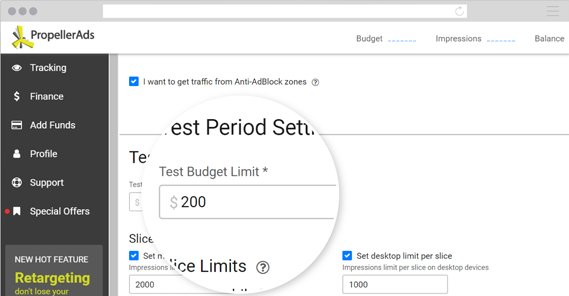
The alternative is to use a SmartCPA system. This is a Cost Per Action system, where your goal is to get conversions. There are a few quirks to this system.
On the bad end, when you run a SmartCPA campaign, the performance of your campaign is analyzed. If it falls below a certain threshold of performance, it transitions into a CPM campaign, sort of. Basically, if the campaign is successful, you only pay for the actions taken. That’s how something like Facebook works; the impressions are free but the actions cost money, though ideally the cost is still lower than what you get out of the action in return. On the other hand, if the campaign is not successful, you will be charged for the impressions as if it was a CPM campaign. This means you can’t intentionally run a bad campaign to get free impressions and exploit the system.
On the good end, the Smart part of SmartCPA is a machine learning algorithm that optimizes your ad offers over time. You run an initial campaign so it can get some benchmark learning, and then it optimizes itself to further boost your actions over time. Their unique machine learning engine is somewhat effective, though it might make choices you wouldn’t normally choose to make. It’s up to you to analyze and decide if it works for your goals.
When you’re running CPA ads on Propeller Ads, you need to set a conversion price for your campaign. Propeller recommends something around 70-80% of your payout. So if you’re running ads for an affiliate offer that earns you $1 each time someone buys, Propeller would recommend that you run their ads with a price of 70-80 cents. This means you pay Propeller that 80 cents each conversion, and Propeller pays their publishers probably something like 60 cents or so; I don’t know specifically their take offhand.
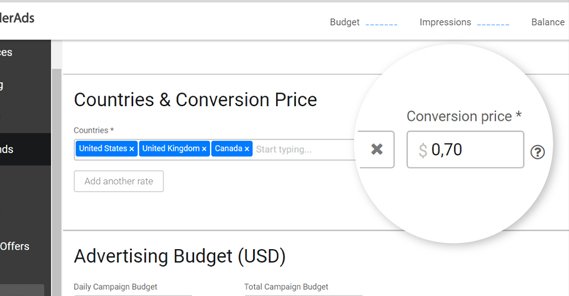
Sure, this means you’re reducing your earnings from $1 per sale to 30 cents per sale, and that sucks, but remember it’s all sales you wouldn’t have gotten in the first place. All of the traffic you get from Propeller ads is traffic you wouldn’t have gotten normally, so you’re not losing potential sales, you’re gaining raw sales.
You can generally adjust the pricing of your conversion to increase your traffic. It’s a simple scale; the more you’re willing to pay, the more publishers will accept your ads to run, and thus the more traffic you get. If you run your offer at 70 cents, you’ll get less traffic and less conversions than if you run it at 80 cents. You know, in general; I make no claims as to the exact specific success rates of any given price point.
In SmartCPA ads, success or failure of the campaign depends on your price point. Calculate the conversion price times the number of conversions to get your generated revenue. Then Propeller will calculate the cost of impressions. If your revenue is not more than the cost of the traffic they gave you, they will charge you for the difference. This is why you should always have extra funds on hand in case a campaign falls flat on its face.
When you’re creating a campaign, you can use Propeller’s publisher network, or you can activate Traffic Boost. Traffic Boost basically just allows you to get traffic from the network of Propeller’s partners as well as Propeller itself. Think of it like the difference between using Google Ads on the search results pages versus in the display network.
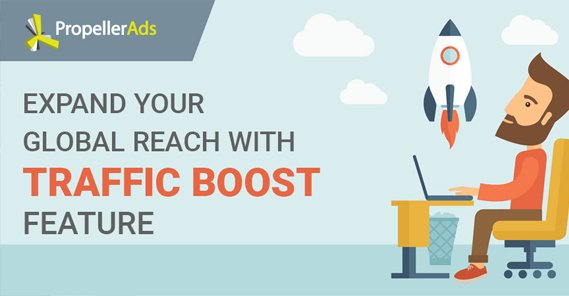
Propeller Ads also has frequency capping, which is a very useful feature to make sure you don’t end up with a ton of redundant impressions. It’s usually a good idea to keep it active, though you can disable it if you want.
As with most ad networks, in Propeller you can choose your target countries, your bid, your budget caps, and your campaign schedule. Scheduling works on a dayparting level, meaning you can choose to start and stop during specific parts of the day rather than just on-or-off for calendar dates.
As far as specific targeting, you have some options, but it’s not super robust. You can choose to segment different types of mobile device, for example, between Android or iOS, and between phones and tablets or other devices like iPads or even Windows Phones. For Desktop devices you can choose operating system. You can also choose connection type for mobile devices, between 3G or 4G or WiFi. This can be useful to exclude, for example, people who aren’t on a connection they’d want to use to download an app.
You can include or exclude individual targets, so you can create a whitelist or a blacklist, whichever works best based on how narrow or broad your targeting will be. You can also filter proxy traffic, which is a good initial way to filter out potentially fraudulent traffic and protect your account.
Propeller Ads Pricing and Conversions
What kind of pricing might you expect, and what kind of conversion rates can you get out of it? As with all things in advertising, much of the specific depend on your offer, your site niche, and your budget.
As far as CPM goes, I see CPMs ranging from 50 cents to $5 in general, depending largely on country traffic and site niche. Entertainment blogs have some low CPMs, while gaming sites get higher CPMs, and other niches ranging in between.
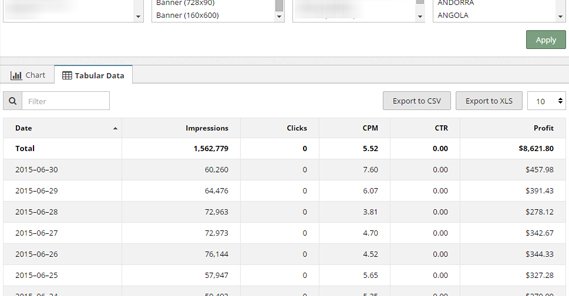
Your CTR will, all things being average, likely range somewhere around 14%. For some niches with CPM ads you’re going to get zero clicks, and that’s fine, when you’re just paying for impressions. For others, you might see something as high as 50-60%, such as in music. Mobile ranges around 10-20%.
All of these numbers are simply reflective of some of my experiments. You can see some more data here, though it’s aimed at the publisher side of things, not the advertiser side.
Problems with Propeller Ads
There are a few potential issues with Propeller ads that I have to cover.
First up, it’s primarily a pop-under network, which not everyone out there likes. A lot of people are consistently irritated by pop-unders, and that can reflect on your brand. I know people who have blacklisted certain companies due to their use of such annoying ad methods. Personally, I can’t fault them for giving it a try, though I also block most of those kinds of ads by default, so I’m a bit hypocritical here.
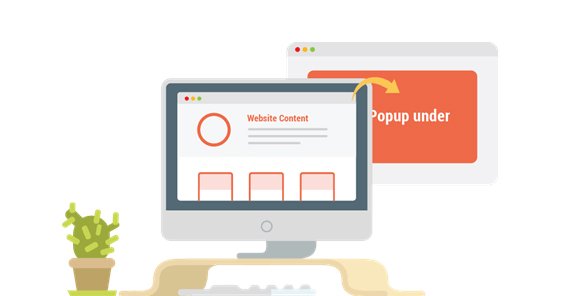
Another problem is that you’re not given a lot of detailed targeting. I know we’re spoiled with things like Facebook’s targeting, and I don’t expect that level of detail out of smaller third-party networks. But for a network that’s heavily focused on mobile traffic like Propeller, you’d think they would be more specific with device targeting. You can choose to target just Android, and just Android 4 or 5 or whatever, but you can’t target sub-versions. This is important if you’re pitching an offer that is more relevant to a specific version than another version.
As with all ad networks, geographic targeting is hugely important. Targeting the tier 1 countries like most of Europe and North America will get you the best results, while targeting the middle east, eastern Europe, or SEA will have worse results.
Propeller also doesn’t track a lot of information. Surprisingly enough, in a world where analytics is a common add-on for value in a platform, Propeller doesn’t offer it. Rather, they require you to use a tracking platform for your offers. That means you have another dashboard and another set of configuration, and you need to keep track of all of the details. This isn’t necessarily a bad thing to have, but it means you’re not getting an all-in-one platform solution.
There’s also the simple mechanical aspect of the ad network, simply that it’s not very user friendly. It’s a pretty boring, pretty bland user interface and, while it works, it’s not slick or advanced.
Is Propeller Ads a Scam?
When you’re searching for Propeller Ads, one site you’re guaranteed to see is this one. It’s chock full of 1-star comments talking about how Propeller locks accounts with funds inside or finds reasons to cancel accounts and steal money.
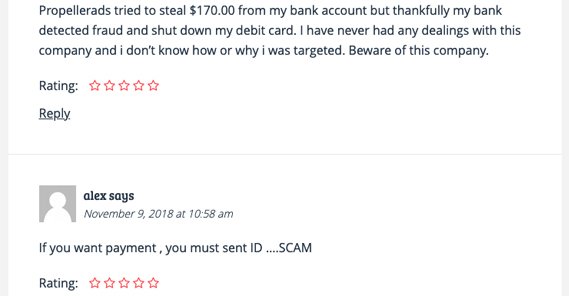
Is this legitimate? I can’t tell you for sure. I haven’t had that experience, and a lot of the people complaining are anonymous or have common names. Yes, I’ll trust “John” with no other information, eh?
Of course, there are 23 negative reviews for an ad network that presumably has hundreds of thousands of customers, so that’s a pretty small number. Every ad network is going to have a few people who broke rules, intentionally or not, and who were punished for it. Every ad network will have its vocal detractors. It’s up to you how much you want to believe them. I don’t believe that a nearly decade-old ad network is a pure scam, but your experience may speak differently.



0 Comments